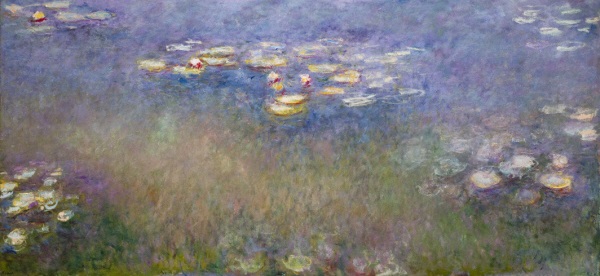Claude Monet, Water Lilies, c. 1915-26

The Work
This monumental painting was part of a triptych that was separated when it was sold in 1956. The three parts are now in the art museums of St. Louis, Cleveland, and Kansas City. Toward the end of his life, Monet was progressively losing his sight, but he continued to paint his favorite subjects such as this one. The presence of unexpected colors, such as yellow and red, creates a hypnotic visual play, and the artist seems to be experimenting with abstraction.
Historical Moment
The First World War began in Europe in 1914 and ended in 1918. This violent and disruptive time inspired some artists to become involved in political arguments, and led others to keep their distance. It is difficult to know how Monet felt about the crises of his time, but his search for beauty in nature may express his feelings of opposition to the war.
The Genre
The impressionist movement was a revolt against the academic tradition. Instead of representing objects in a realistic manner, with precise lines and perspective, artists sought to capture a moment of experience as it was lived. They left the studio to paint outdoors, and tried to re-create effects of light with soft brushstrokes and bright colors.
The Artist
Claude Monet (1840-1926) is considered to be the father of impressionist painting. His work Impression Rising Sun (1872) inspired the title of the movement. He is best known for a series of paintings of the waterlilies that he cultivated in the pond of his garden at Giverny.

